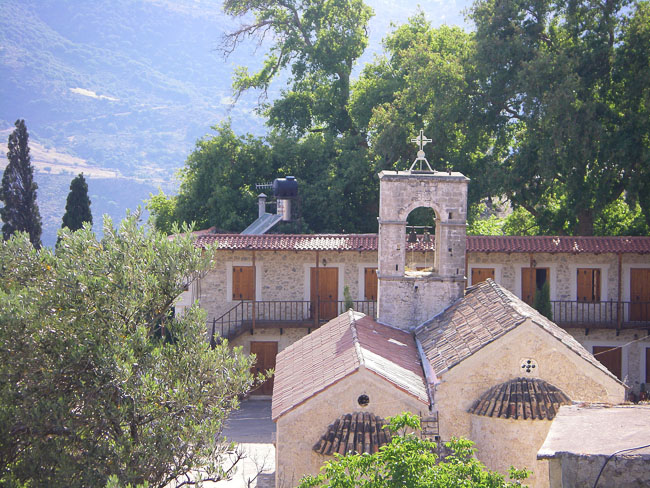
Moni Vrontisiou – Zaros
The monastery of Vrontisiou is one of the most famous and important monasteries of Crete that was a remarkable centre of letters and arts during the Cretan Renaissance. It is no exaggeration to say that the scholars, artists and respected monks of the monastery of Vrontisiou, during the last centuries of Venetian rule, marked their presence with their accomplishments.
Renowned monks that copied manuscripts, painters and teachers connected their name with the monastery and the area. Michael Damaskinos painted six of his most important icons here, while tradition wants El Greco to have studied for a while in the monastery’s laboratory.
The monastery of Vrontisiou is located on the southern slope of Psiloritis, just northwest of the village of Zaros and is about 50 km from Heraklion. Although there is no exact information about its chronology or its founders, it was probably founded during the Second Byzantine period.
It experienced great prosperity during the Venetian period and began to decline after the conquest of Crete by the Turks in 1669. During the Cretan revolution, it was often a target of the destructive fury of the Turks. Despite the fact that the buildings of the monastery were mostly destroyed, some of the fortress-type features can still be seen, with the two-aisled church in the centre being dedicated to Saint Anthony and the Apostle Thomas. Outside the monastery, under age-old plane trees, we see one of the most remarkable sculptural works of the Cretan countryside that is located there as a reminder of the prosperity of the monastery during that time. It is a relief fountain, where the water runs from the mouths of three lions, while the relief is completed with the depiction of Adam and Eve.
The entrance of the monastery is new but traces of the old imposing passage can be seen, and the bell tower is independent of the church, according to the standards of the period in which it was built. Inside the two-aisled church, parts of the remarkable mural decoration can still be seen. An important part of the frescoes is the one where Saint Symeon the Theodoch is depicted holding the Holy Infant in his arms. In the iconostasis among the interesting icons, we observe the Vine of the Angel, one of the most remarkable icons of the Cretan School. The ruins of the monastery, especially in the 19th century, were fatal for a huge number of relics. Today only a few traces remain that testify to the cultural prosperity of one of the most important centres of the Cretan Renaissance.